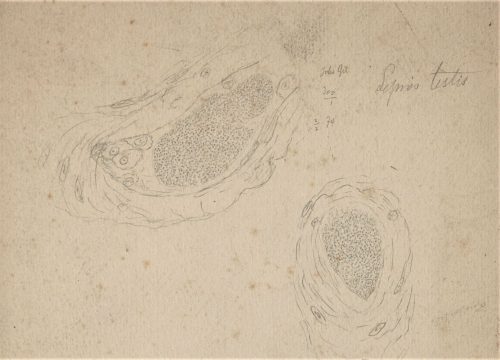Contagion?
Up to the mid-19th century, discussions around the cause of the disease intensified, yet no consensus was reached. In Norway, Ove Guldberg Høegh, appointed ‘Chief Medical Officer for Leprosy’ in 1854, was one of the first people to openly claim that leprosy was an infectious disease. Although the theory had been known about in different circles for some time, it was still only supported by a handful of physicians.
When Gerhard Armauer Hansen was employed as a physician at Pleiestiftelsen Hospital and as an assistant physician at Lungegård Hospital in 1868, he was reportedly opposed to his superior and future father-in-law’s heredity theory from the very beginning. Hansen promoted the pathogenic theory, not only on the basis of microbiological studies, but also epidemiological analyses. He was able to identity the leprosy bacteria in 1873, but lacked microbiological evidence that it was the bacteria that caused transmission and was thus the cause of the disease. Therefore, the leprosy registry became Hansen’s most valuable tool in his argument that leprosy was an infectious disease.
Based on thorough analysis of the registry, Hansen concluded in 1874 that leprosy was infectious. In the publication ‘Report to the Norwegian Medical Society in Christiania about a journey made with the support of the Society to undertake investigations into the causes of Leprosy’ he pointed out that the decline in new cases had been greatest in areas where the those with leprosy had been isolated through hospitalisation or admission to care institutions. Hansen argued that it was evidently the number of infected people in homes that played the most significant role in the development of new cases.
The effectiveness of isolation was given significant weight in the debate about the cause of the disease and in regard to what measures would be most impactful to limiting its spread. In the first International Leprosy Conference in Berlin in 1897, Hansen was celebrated and the Norwegian isolation measures were deemed a great success. Despite the lack of final microbiological evidence of contagion, medical communities around the world were largely convinced that leprosy was an infectious disease.

Bergen City Archives.

The Regional State Archives of Bergen.



